There are a variety of jess styles that have been successfully used in falconry.
Traditional Jesses
This jess system is not in much use today as there are more preferred ones available. The traditional jess is a single piece of leather that makes up the jess and the anklet. The problem with this is that the slitted jess does not come off and a bird can easily escape trailing a long jess.
 |
A sample traditional jess and the same jess/anklet set up as if in use. |
Aylmeri Anklets
This system was developed by Guy Aylmeri in the early 1900s. The benefit is that the anklet piece is separated from the jess pieces - and there cannot be a discussion of jesses without introducing the anklets. The anklets can be narrow or wide, braided or leather, and can have a grommet or just a hole punched in the leather.
One note about leather anklets is that although we may look at the leather and assume that the sueded side would be more comfortable on the inside, that is not the case. The smooth side should face the leg as it will not trap as much dirt and will not cause as much friction against the leg as the sueded side does. One rule of thumb that many falconers go by is to make the jesses long enough so that the swivel reaches the end of the tail.
A full discussion on making anklets can be found here: Anklets
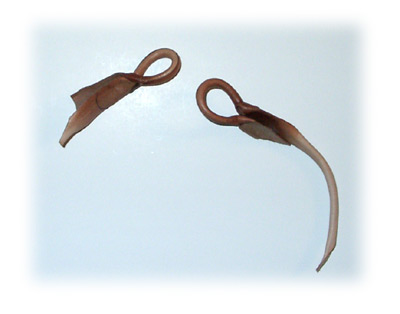 |
This style of anklet was developed by Steve Layman and features a narrow band that is rolled from leather. There is only a small surface area that comes in contact with the bird's tarsus. |
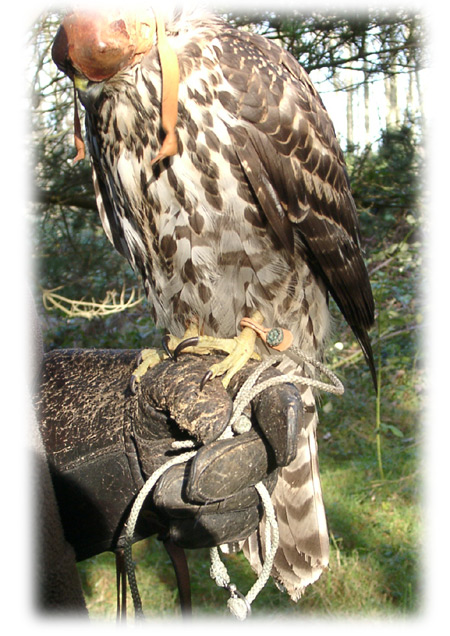 |
A Layman anklet and leash shown on an immature Goshawk. |
Jesses
There are so many different forms of jesses. Traditionally jesses are made of leather, but they can also be braided or made of parachute cord and almost any other material. They feature a button of some sort at one end to hold the jess in the anklet hole. They feature a slit at the other end to attach a swivel or a jess extender. These are for tethering or handling only, and not for flying or hunting. The slit and the braided material may increase the likelihood of a hawk being snagged or snared and hung, and braided jesses tend to freeze in very cold climates. Some birds tend to pull out their jesses, even while hunting. These birds may have the jess button replaced with a hold allowing the jess to slide onto the anklet, then the length of the jess to slide through the anklet hole thus looping the jesses onto the anklet to provide control in the field. These should be stiff and should only have a small hole if any to prevent the bird from getting hung up while hunting. Braided jesses can be more easily pulled through the anklet hole, particularly by playful falcons or owls. A zip tie can be placed around the jess 1/4" below where it passes through the anklet hole thus trapping the anklet between the jess button and the zip tie yet allowing the jess to spin freely in the anklet hole. Just cut off the long tag of zip tie plastic to prevent it from annoying the bird. Jesses can also be braided with a small lump in that spot to make it less likely that the jesses can be pulled through. There are many different sizes of jesses to accommodate a bird's reach - the jesses should not constrict her reach if she stretches one foot out in one direction and the other in the opposite. Jesses also need to be sized according to the bird's tail length, her perching setup, and her behavior. Some birds do better with a shorter jess, such as 6" for a Harris' Hawk or 4" for a Peregrine, and some birds do better with a longer jess. Observe how your bird does and consider modifications as appropriate.
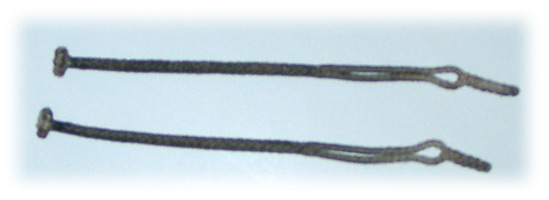 |
Jesses are designed and made by Steve Layman. These are braided to form both the slit and the button. |
 |
Jesses made by Steve Estebo. Notice here that they are made of parachute cord and use a washer for the button. |
The jesses are secured by either a swivel or a jess extender, however the mechanism to attach them is the same. The jess slips through a hole in the swivel, then the swivel slides through the slit in the jess as illustrated below. Both jesses are secured side-by-side with each other, but only one jess is shown here for clarity. The jesses should be long enough for the swivel to be at the tip of the bird's tail, and for the bird to have freedom of movement, but not too long that she could straddle a block perch with it or entangle anything between the jesses. Jesses that are too long can get around the tail and cause feather damage.
 Images courtesy of Scottish falconer Johann Hanekom. Images courtesy of Scottish falconer Johann Hanekom.
|
Field Jesses
The point of switching from mews jesses to field jesses is safety. Mews jesses typically are longer and have a slit, but the style used in the mews will depend on the management techniques for the bird. Field jesses may only have a tiny hole, at most, to prevent them from getting caught on a branch. They are typically made shorter than mews jesses to prevent them from wrapping around a branch or brush and entangling a bird (falcons needing much shorter jesses than birds hawked from the fist). Some make their field jesses much stiffer to further prevent them from wrapping around a branch. They should always be smooth and never braided, again to prevent them from being hung up on something.
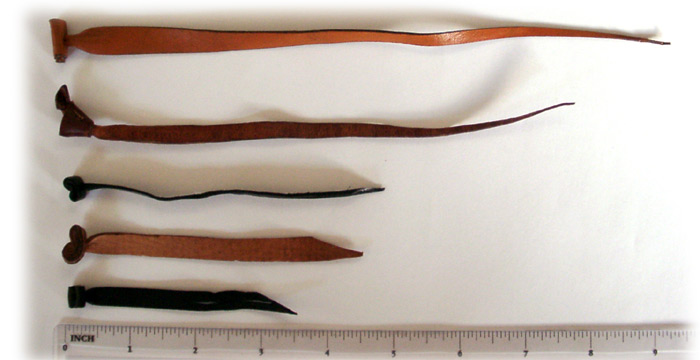 |
Several samples of field jesses. Top two waxed and tapered jesses are designed by Steve Layman. |
Removable Jesses
The point of removing jesses from the anklet is to prevent tangling in the field. A jess that snaps on or a bullet jess system makes it easy to keep a bird jessed then quickly release her when necessary.
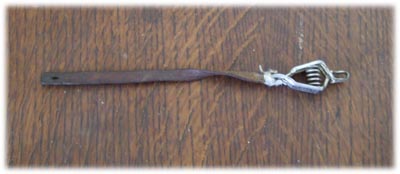 |
Here a Mueller electrical clip is used on the end of a jess to quickly attach and detach the jess as needed. |
Jesses
A jess designed by falconer Kazuhiko Sugisaki for both tethering and flying in open country. The second button prevents the bird from pulling the jess from the anklet. Silicone is used to permeate the nylon cord, so it is less likely to get caught in thorns.
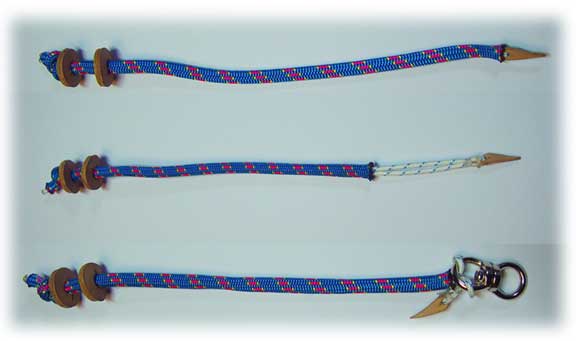 |
Several samples of jesses.
Image courtesy of Kazuhiko Sugisaki. |